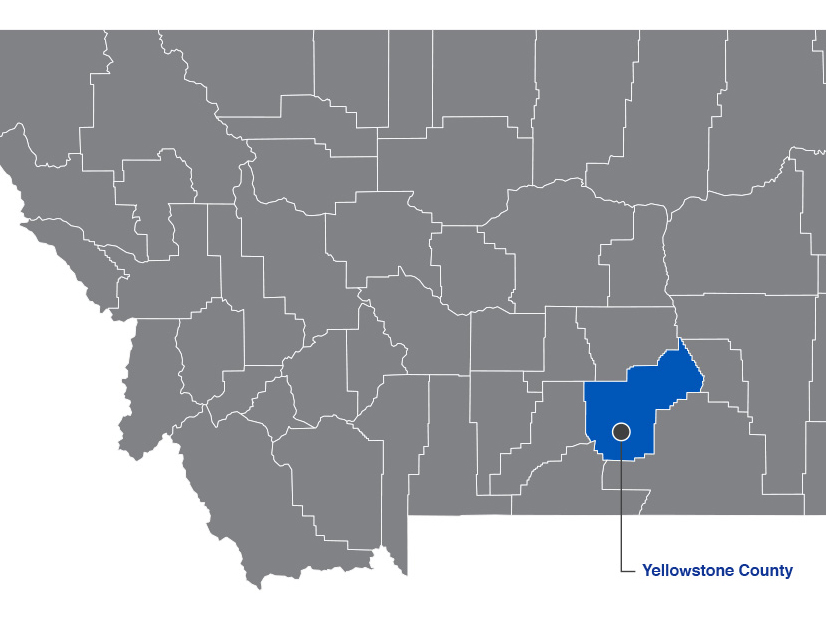
The D.C. Circuit Court of Appeals on Tuesday upheld a FERC decision that allowed a solar-and-storage project in Montana to be certified as a qualifying facility under the Public Utility Regulatory Policies Act even though its total power production capacity exceeded the law’s 80-MW limit (21-1126).
FERC had justified its March 2021 decision under its longstanding “send-out” analysis, which determines a facility’s capacity based on the electricity it can actually deliver to an interconnecting electric utility.
Broad Reach Power’s Broadview Solar project included solar panels with a gross capacity of 160 MW DC and a 50-MW battery, but the project’s inverters allowed it to produce and deliver only 80 MW to its interconnection with NorthWestern Energy’s (NASDAQ:NWE) transmission system.d.
“The commission’s determination that Broadview is a qualifying facility with a ‘power production capacity … not greater than 80 MW’ because its component parts, working together, produce no more than 80 MW of grid-usable AC power was reasonable and well-supported by the statute’s text, structure, purpose and legislative history,” the D.C. Circuit said in its decision.
In upholding FERC’s order, the court rejected challenges by NorthWestern and the Edison Electric Institute, which argued that FERC exceeded its authority because the “power production capacity” of Broadview’s facility should be the total amount of DC power generated by the solar array and not the grid-usable AC power produced by the inverters working in conjunction with the solar array and battery.
PURPA was enacted in 1978 to encourage alternative energy generation by “qualifying small power production facilities” (QFs). It requires utilities such as NorthWestern to purchase a QF’s generation output, “providing those facilities with a guaranteed market,” the court noted.
Montana has been an especially contentious front for PURPA disputes in the West, where utilities contend the law requires them to integrate large volumes of QF renewable resources at contracted rates far above market rates.
Circuit Judge Justin Walker dissented in part from his colleagues on the three-judge panel, Circuit Judge Cornelia Pillard and Senior Circuit Judge David Sentelle, who drafted the majority opinion.
PURPA “gives lucrative benefits to small facilities that produce solar power,” Walker wrote. “It defines them as facilities with a ‘power production capacity’ of no more than 80 MW. … Because Broadview can produce 80 MW for its inverters while it simultaneously produces 50 MW for its battery, Broadview’s facility is capable of producing more than 80 MW of power. So it is too large to be a ‘small facility.’ For that reason, I would grant the petitions, vacate the rehearing orders and remand to FERC for reconsideration.”
The case took an unusual twist at FERC before reaching the appeals court.
In September 2020, FERC broke with its own precedent by deciding the Broadview project could not be certified as a QF because it exceeded the 80-MW cap despite its limited interconnection. Its decision aligned with the arguments of NorthWestern and EEI.
The commission’s lone Democrat at the time, Richard Glick, dissented. The commission’s decision, Glick wrote, “will make QF status turn on the capacity of any one component of the facility, rather than the actual power production capacity of the facility itself. That conclusion finds no support in the statute, our precedent or common sense.” (See Montana Hybrid Ruling Departs from PURPA Precedent.)
In March 2021, with Glick now chairman, FERC set aside its prior ruling, reinstated its send-out analysis, and determined Broadview could be a QF. (See FERC Reverses Ruling on Montana QF.)
“It is not fathomable to conclude that Congress would be more concerned about the electricity a project could theoretically generate on its own but not deliver to any customer,” Glick said at the time. “Instead, since the statute is all about the sale of a project’s output, the appropriate way to look at a facility is to assess how much can actually be sold to the purchasing utility.”

